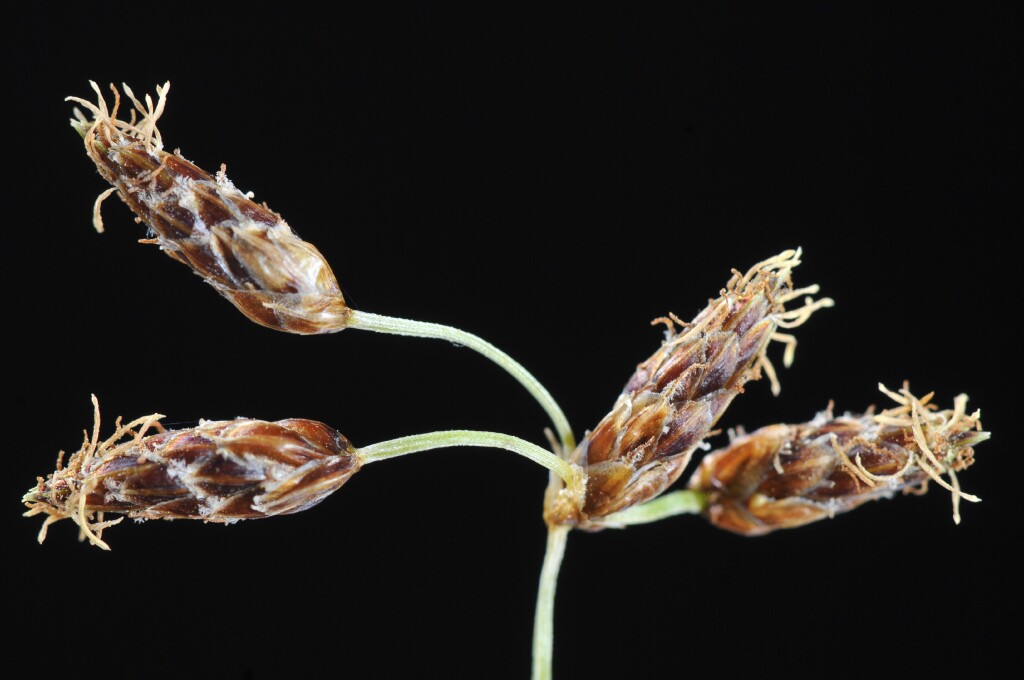Fimbristylis dichotoma
(L.) Vahl Common Fringe-rushTufted perennial with very short rhizome. Culms slender to rather stout, compressed, 10–75(–100) cm high, 1–2 mm diam. Leaves from much shorter than to equalling culms, 1.5–5 mm wide; ligule a dense fringe of short hairs or absent. Inflorescence simple to compound, with few to numerous spikelets, solitary or clustered, on branches to 10 cm long; involucral bracts leaf-like, 1–3 much shorter to somewhat longer than inflorescence. Spikelets ovoid, terete, acute, 4–10(–20) mm long, 2.5–3(–5) mm diam; glumes papery, obtuse, often shortly mucronate, glabrous, with faint, 3-nerved keel and nerveless or obscurely few-nerved sides, orange-brown, 2–4.5 mm long; stamens 1–3; anthers 1.3–2 mm long; style 2-fid, ciliate at least above. Nut biconvex, obovoid or broad-obovoid, shortly stipitate, smooth or sparsely and minutely verrucose, conspicuously trabeculate by 5–10 (rarely more) longitudinal ribs on each face and numerous cross-bars, glistening white to pale yellow, rarely yellow-brown, with epidermal cells transversely elliptic to oblong, 0.7–1.3 mm long, 0.6–1 mm diam. Flowers spring–summer.
VRiv, GipP, Gold, NIS, HNF. All mainland States. Also other tropical and subtropical regions. Rare or sporadic in Victoria, collected from near Benalla, Glenrowan, Warby Ranges and Patho Plains.
This variable, widespread species includes several forms that may be worthy of recognition.
Wilson, K.L. (1994). Cyperaceae. In: Walsh, N.G.; Entwisle, T.J., Flora of Victoria Vol. 2, Ferns and Allied Plants, Conifers and Monocotyledons, pp. 238–356. Inkata Press, Melbourne.
 Spinning
Spinning


